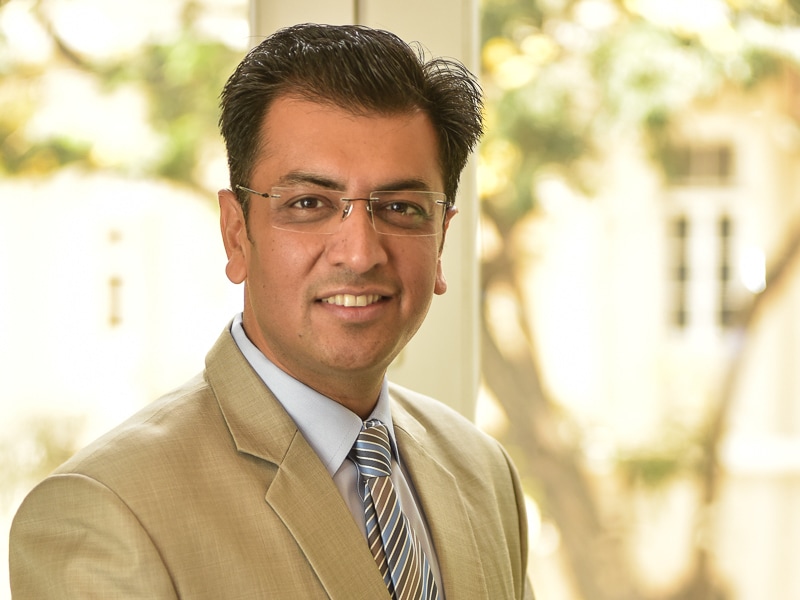Post the lockdown, big solitaires have vanished: Sachin Jain
Forevermark India managing director Sachin Jain on why people have been buying bigger, better and simpler jewellery, and the trends that will continue into this year


 Sachin Jain, Managing Director, Forevermark India
Sachin Jain, Managing Director, Forevermark India
Over the last few years, the Indian jewellery sector had been facing stiff competition from the luxury travel and automobile sectors, fighting for a share of HNIs and UHNIs income and spends. But that seems to have changed last year, in the Covid-19 pandemic. As travel has been restricted, the rich have been diverting their income towards buying jewellery, a reliable asset class. In the backdrop of this consumer sentiment, Sachin Jain, managing director of Forevermark India elaborates 2021’s big trends in India’s luxury jewellery category.
Buy better
Historically, the jewellery business behaves differently than other luxury sectors. “When a consumer buys a dress worth Rs 2 lakh or Rs 5 lakh and when the same consumer buys jewellery worth that much, the process and sentiment is very different,” says Jain.
A consumer buying jewellery is largely inclined towards an asset class development as well. “Hence, post the lockdown, we see that high-end jewellery pieces, big solitaires, have vanished,” adds Jain. A big population in India wasn’t financially affected by the Covid-induced lockdown and this class was looking at buying more jewellery. “If a person bought a five-carat diamond last year, they bought a 10-carat diamond this year as they had more money to spend on jewellery,” says Jain.
As this purchase behaviour continues, 2021 should be the strongest year in terms of consumers’ sentiments in buying diamond jewellery.That may not be same with gold jewellery, especially among HNIs and UHNIs, as gold purchases in India cannot be strictly classified as a luxury purchase. It is purely for asset-class build-up. “You don’t have a consumer buying a Rs50 lakh piece and wearing it at a party. It’s mostly for weddings,” says Jain.
Simple products
Consumers are looking for simple, minimal products of superior quality that can be worn every day. “Covid impacted all our lives. Opulence and grandeur will not connect with the mind space we currently are in. If jewellers are only going to focus on big, bridal pieces, 90 per cent of customers might feel disconnected,” says Jain.
“Also, earlier, consumers would buy a huge piece of jewellery, which could be hardly worn once in two years. But that has changed now. Consumers want jewellery that can be enjoyed more often and are willing to pay extra for superior quality, certified jewellery,” says Jain.
In that respect, the noise around lab-grown diamonds will subside as it never has and never will hold the kind of value that natural diamonds do. “They will make some play in the long term but in fashion jewellery or for not-so-important occasions of life.”
Sustainability
One of the impacts of Covid-19 is that everyone now looks at the natural world with more respect. Millennials, especially, have become more conscious and want to know where their products are coming from and what their impact is on the planet. “Sustainability is a big trend and consumers take pride in buying and wearing products that are eco-conscious and responsibly sourced, unlike a few years ago when the purchases were majorly value-driven,” says Jain.
De Beers (Forevermark’s mother company) operates in 37 countries, of which most European markets have been extremely aware and conscious of buying eco-conscious products. “We are ready for this trend and very happy that the same conversation is becoming louder in India,” says Jain. He also believes that the companies and brands that will not align their offerings with sustainability norms will fail to sustain in the long run.”
Digitisation
The trend of digitisation in the diamond business focuses on information dissemination, to find out how consumers look for products and information, and e-commerce. “Earlier, only younger consumers would browse high-end diamond jewellery online. Today, we see that even people above 60 years of age are spending a lot of time on the World Wide Web to understand the product category,” says Jain. “Consumers enter a physical store today a lot more aware of their choices.”
The e-commerce space has grown a little as well, but it will not take over physical purchases in this category. “People still want to feel and touch the product,” says Jain. But good storytelling is very important online. “Digital content helps consumers make more conscious and aware purchases, which is important as this is an expensive category, and when you are putting in your hard-earned money into buying something, you should do your research.”
On the business front, Jain believes that all brands, regardless of the different stages of digitisation and sustainability they are at, must pause for a bit and make a clear, comprehensive, and seamless business plan. “Don’t say that you can’t change. The good part of our business is that the changes in our business are slow but very steady. Hence, you can catch up and create a plan of action that is unique to your brand,” says Jain.
Given the trends, even Forevermark has put in action a 10-year plan to become a 100 per cent carbon neutral and gender-equal company. It is also working towards leading ethical practices in the diamond business.
First Published: Jan 30, 2021, 09:00
Subscribe Now